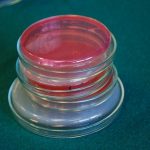Odor Activity Values (OAVs) are a significant parameter used in the field of aroma analysis to assess the contribution of individual volatile compounds to the overall aroma or flavor perception of a product or sample. OAVs provide a quantitative measure of the sensory impact of each volatile compound present in a sample, allowing researchers and flavorists to identify key odor-active compounds that significantly influence the aroma profile. In this explanation, we will delve into the concept of OAVs, their calculation, interpretation, and applications in aroma analysis.
Definition and Calculation of Odor Activity Values (OAVs)
Odor Activity Values (OAVs) express the ratio between the concentration of a volatile compound in a sample and its corresponding odor threshold. The odor threshold is the lowest concentration at which a human can perceive the odor of a specific compound. When the OAV of a compound is higher than 1, it indicates that the compound is present at a concentration above its odor threshold and is likely to contribute significantly to the overall aroma perception. On the other hand, OAVs below 1 suggest that the compound’s concentration is lower than its odor threshold, and it may not have a noticeable impact on the aroma.
The calculation of OAV involves two main parameters
- Concentration of the volatile compound: The concentration of each volatile compound is measured in the sample using analytical techniques such as gas chromatography (GC) or liquid chromatography (LC) coupled with mass spectrometry (MS).
- Odor threshold of the volatile compound: The odor threshold is determined through sensory analysis, where a panel of trained assessors identifies the lowest concentration of the compound at which the odor becomes perceptible.
The OAV is then calculated using the formula:
OAV = (Concentration of volatile compound) / (Odor threshold of volatile compound)
Interpretation of Odor Activity Values (OAVs): The interpretation of OAVs is critical in understanding the contribution of individual volatile compounds to the overall aroma profile of a sample:
- OAV > 1: If the OAV is greater than 1, it indicates that the volatile compound is present at a concentration higher than its odor threshold. Such compounds are considered odor-active and are likely to significantly impact the perceived aroma of the sample.
- OAV ≈ 1: When the OAV is close to 1, it suggests that the volatile compound is present at a concentration similar to its odor threshold. In this case, the compound may have a subtle influence on the aroma.
- OAV < 1: If the OAV is less than 1, the volatile compound is present at a concentration below its odor threshold. Such compounds are considered non-odor-active and are unlikely to contribute significantly to the aroma.
Applications of Odor Activity Values (OAVs) in Aroma Analysis:
- Flavor Characterization: OAVs are extensively used to identify and characterize the key odor-active compounds in various food and beverage products. Understanding the impact of individual volatile compounds helps flavorists and food scientists in formulating products with desired aroma profiles.
- Quality Control: OAVs can be employed as a quality control tool in the food and beverage industry. By comparing OAVs of samples from different batches or production processes, manufacturers can ensure consistent aroma quality.
- Aroma Improvement: Aroma analysis using OAVs can aid in optimizing the aroma profiles of products. By increasing the concentration of specific odor-active compounds, product developers can enhance the overall sensory experience.
- Sensory Evaluation: In aroma profiling, OAVs provide valuable information for sensory evaluation panels. Panelists can focus on the most odor-active compounds when evaluating the aroma of a sample.
- Aroma Source Identification: In environmental studies, OAVs are used to identify and prioritize the volatile compounds responsible for specific odors, helping to identify the sources of odor pollution.
- Aroma Impact of Processing: OAVs can be used to investigate the impact of processing methods on the aroma profile of products. This helps in selecting appropriate processing conditions that preserve or enhance desirable aromas.
In conclusion, Odor Activity Values (OAVs) are a powerful tool in aroma analysis, providing a quantitative measure of the sensory impact of individual volatile compounds in a sample. By using OAVs, researchers, flavorists, and food scientists can identify the key odor-active compounds that significantly contribute to the overall aroma perception. This knowledge is crucial for flavor optimization, quality control, and sensory evaluation, making OAVs an essential parameter in understanding and manipulating the aroma profiles of various products.



Leave a Reply